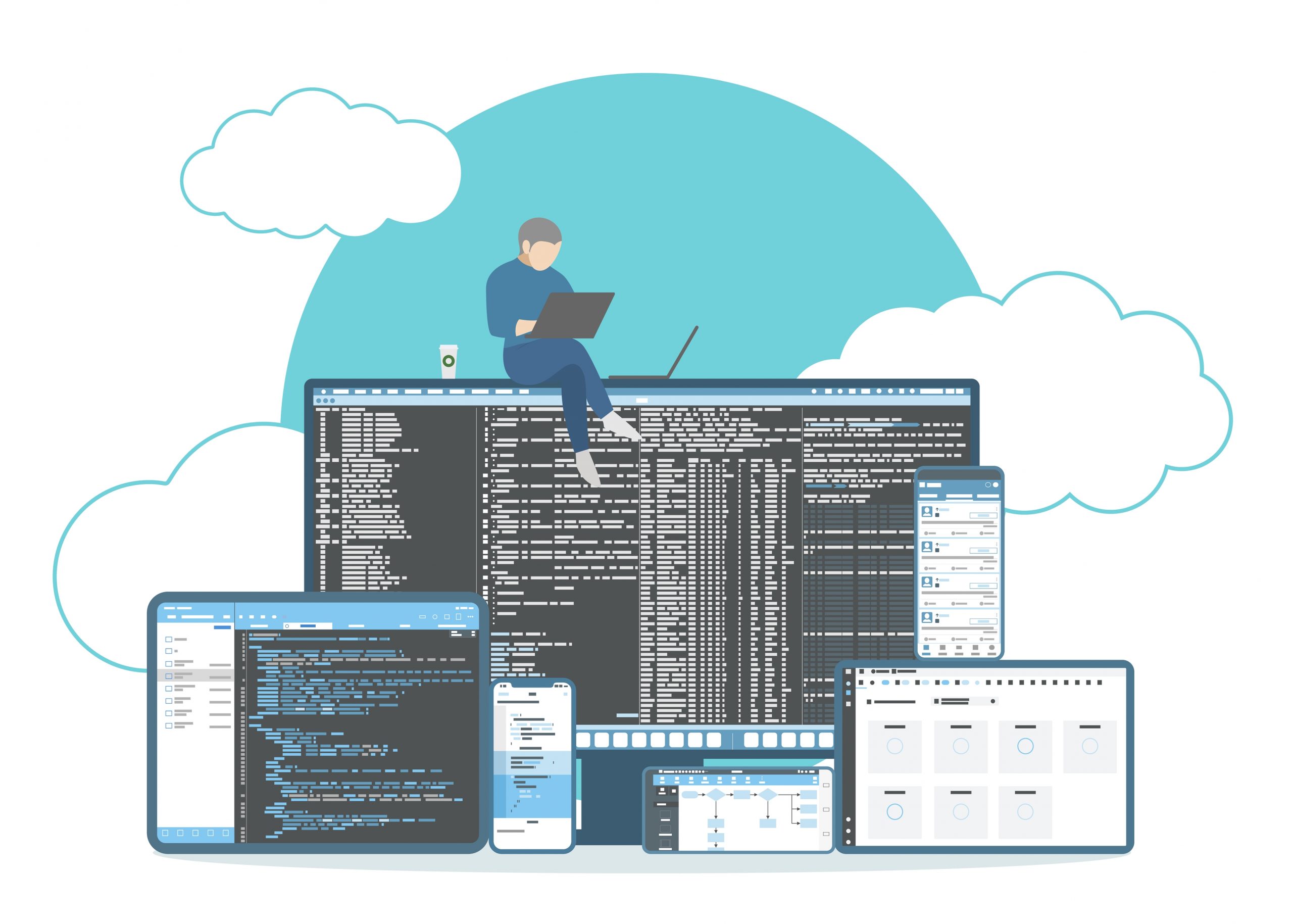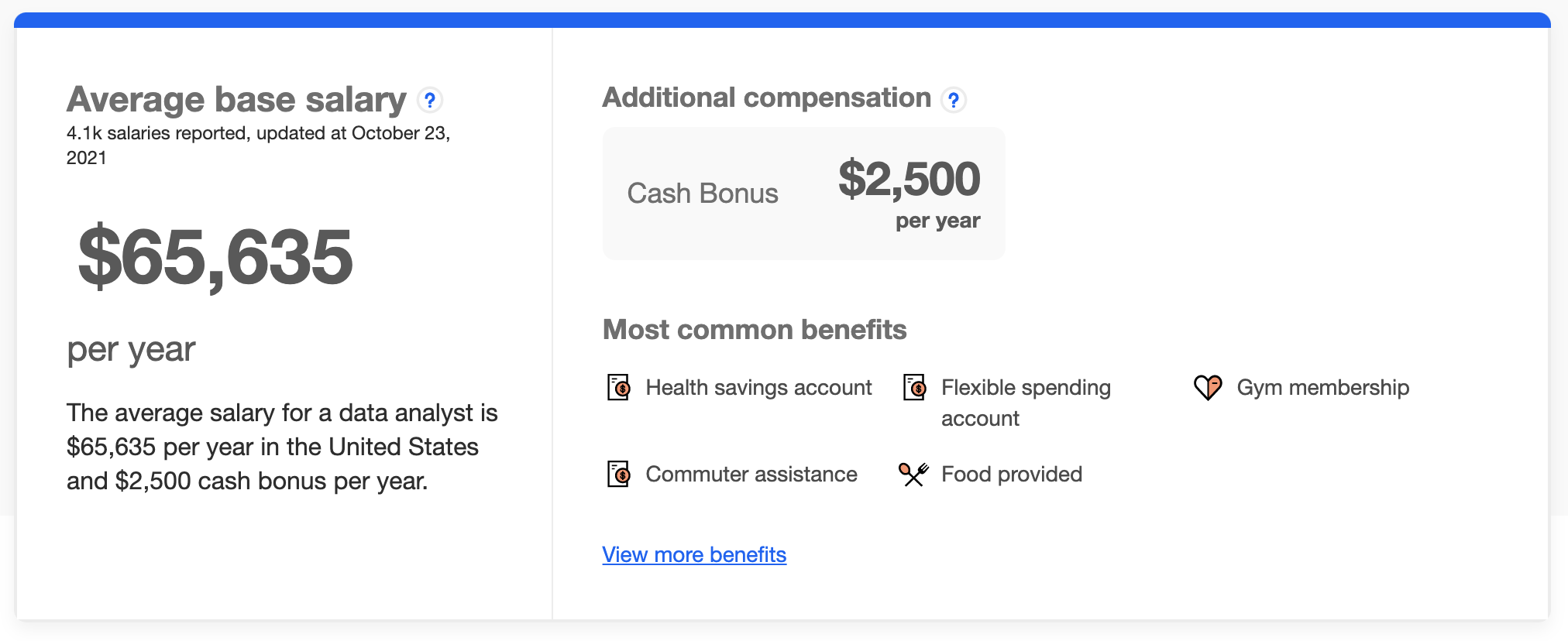How To Become a Data Analyst with No Experience: 2023 Guide

In this article
If you’re looking to become a data analyst but lack experience, then you’re in the right place. With the demand for data specialists growing, it’s never been a better time to start your career path in data analysis.
Think of this blog as your straightforward career guide to becoming a data analyst. Besides reviewing what you need to do to enter this field, we also explain what a data analyst does and the soft skills you must have to ace your job.
Follow the guidelines and tips given below to get closer to landing your first job as a data analyst.
Is It Possible To Become a Data Analyst With No Experience?

The short answer is yes.
You may wonder if data analysis is hard or is it possible to work as a data analyst without experience? Yes, You can become a data analyst without any experience, provided you have the required skills for the job. Why do we say that? For one, the data market is growing at a significant rate. In fact, in the Jobs of Tomorrow Report, the World Economic Forum has listed data jobs among the professions with the highest growth rates.
Second, there is a skills gap in the market. According to an NTUC Learning Hub study, 93% of the employees reported that their workforce is not sufficiently productive due to a scarcity of data skills. People like you can step forward to fill this gap.
Finally, some of the skills required in the field of data analytics are transferable from other areas of work. Sought-after skills include attention to detail, research capabilities, collaboration, and data visualization.
How To Become a Data Analyst With No Experience

-
Determine Your Ideal Career Path
-
Take a Course or Get a Certificate
-
Build a Portfolio
-
Refine the Skills Needed for Your Target Job
-
Consider Related Jobs Where You Can Transfer into Data Analytics
Your first step is to develop the necessary skills. After that, you need to determine the trajectory you want your career to take. Finally, start marketing yourself as a data analyst, network, and climb up the ranks of data analytics.
Here are the steps you need to take to become a data analyst:
Determine Your Ideal Career Path
If you prefer working from home, you’ll have great luck working as a freelance data analyst. Once you have a substantial clientele, you can work as a consultant at organizations.
Alternatively, you can start as a junior data analyst and transition to data scientist after advancing your programming skills or getting a degree in data science.
Another route for junior data analysts is to advance their skills and experience to become senior data analysts. From there, if you develop sufficient leadership abilities, you can eventually become a manager or Chief Technology Officer.
Some companies require employees in managerial positions to have a Master’s degree focusing on data analytics. So, if you plan on steering your career path towards management, consider getting a relevant higher degree along the way.
If you want your career path to be specialization-inclined, choose a specific department. For example, as an entry-level data analyst, you can advance to marketing analyst if you hone your marketing skills.
Likewise, if you are more interested in tech solutions, you can climb up to the rank of marketing or operations analyst after gaining adequate experience. Basically, you need to shape your career path according to your financial goals and personal interests.
Take a Course or Get a Certificate
Once you have decided the career path you wish to take, sign up for a data analytics course or certification. Look for an expansive one so that you can apply for multiple job titles in the niche.
A relevant course in data analytics offers the following benefits:
- Mentorship: The best data analytics courses have one-on-one guidance from a mentor. Besides being crucial in motivating young or career-changing professionals, it also helps newcomers get feedback on their work.
- Skill Building: A well-curated data analytics course will also hone your existing skills and help you develop new ones to excel in the field.
- Career Coaching: If you aim to get an entry-level data analyst job, you should have career advice from industry experts. Most top data analytics courses come with a job guarantee and provide career coaching to get you started in the field.
- Hands-on Curriculum: You can read every book about data analytics, but it still won’t prepare you for the real world. On the other hand, a well-structured course will educate you about data analytics concepts with curated resources and practical exercises. You can then use these projects to build your portfolio.
The Springboard Data Analytics Bootcamp is an excellent option in this regard since it gives you unlimited mentor support, hands-on experience, and career support from industry experts.
Since the course also requires you to create two capstone projects with realistic data analytics scenarios, you will have something to put on your resume when applying for a job. In this way, even if you are not experienced, you have something to show for your skill.
Build a Portfolio

A portfolio will help you land a job since it establishes credibility and shows the projects you have previously worked on. Your portfolio should typically highlight the following things:
- Your technical skills
- Your creativity towards research
- Data analysts ability
- Ability to draw insights
- Team working and communication skills
Read this extensive guide to learn how to build a portfolio for data analysis.
Refine the Skills Needed for Your Target Job
By this point, you should have a foundational knowledge of the field along with some preliminary skills (read more on how hard data analytics is to learn here). Now, you need to align your subsequent steps with your target job. Identify your existing soft skills and determine which of those need more work.
For instance, you may have excellent research skills but lack the expertise of giving presentations. Bear in mind that senior analysts have to present their findings to the executives and stakeholders in an organization.
So, if you want to follow your pre-established career path, you need to work on acquiring these skills or honing the ones you believe are required for the next job title in your career path.
Get To Know Other Data Analytics Students
Sarah Ganihar
Business Intelligence Analyst at Amazon Web Services
Jo Liu
App Quality Analyst at Snap Inc.
Joel Antolijao
Data Analyst at FanDuel
Consider Related Jobs Where You Can Transfer into Data Analytics
You may need to work a job related to data analytics to build up your skills. For example, you could begin working as a data entry operator. In this role, your core responsibility would be logging data receipts and transferring information from paper format to computer formats. As you develop the necessary analytical skills, you can advance to a junior data analyst position.
Spend time identifying your soft and core skills. Think about how you can transfer them into data analytics. Consider: do you need to acquire new skills?
Perhaps you have considerable marketing experience and know the basics of analytics. These skills can be transferred into a data analysis role, such as a marketing data analyst.
Yet, you’ll need to acquire new skills like learning Python and other data analytics tools that will eventually land you a job in this field. The trick is to know your value and showcase it to employers through your resume and portfolio.
For example, as a data capture specialist, you will have to make the data capturing process more efficient or upgrade databases to process queries faster. With some analytical and programming skills, you can turn your career towards entry-level data analytics.
Other related jobs include a data entry clerk, information processor, typist, configuration officer, and junior computer operator.
5 Entry Level Data Analyst Jobs You Can Get Without Experience

Many high-level data analyst jobs require you to have a certain degree of experience. There are many data analytics jobs that you can get without experience, including:
- Entry Level Data Analyst
- Data Entry
- Research Analyst
- Data Associate
- Entry Level Business Analysts
1. Entry Level Data Analyst
An entry-level data analyst collects, analyzes, and manages data. You would have to perform research involving industry data and define market trends based on it. Additionally, you will work with a team of statisticians and expert analysts, creating reports and presenting them to managers, stakeholders, and executives.
2. Data Entry
As a data entry clerk, you will be in an administrative position, handling routine clerical tasks, mainly surrounding data entry into a computer system. You have to make sure the company’s database is up-to-date accurately.
Some responsibilities of a data entry specialist are:
- Reviewing records to ensure accuracy
- Inputting data into databases
- Updating the database with revised or new information
- Backing up the database regularly to preserve information
- Preparing files and digital material to be printed
- Retrieving electronic files and records required by other members of the organization
3. Entry Level Business Analyst
A junior or entry-level business analyst supports data analysis for a business and helps provide insights for better solutions and operational improvements. You will work as part of a team with senior analysts. Your tasks could be anywhere from assisting to performing industry research.
4. Research Analyst
Research analysts examine the accuracy of the collected data to make sure it provides meaningful insight into trends. They use mathematical, analytical, and statistical models to explore data-based patterns revealing lucrative business opportunities that can improve performance.
5. Data Associate
A data associate tracks data in research-based studies provide guidance about compelling data visualizations, reports issues with software and tools, develops dashboards, and curates templates and searchable Excel sheets using in-house tools.
The responsibilities differ across industries, but data associates are generally responsible for collecting data, managing it, and inputting it into the company’s software.
Data associates commonly work in the healthcare sector, where some prerequisite skills include Microsoft Excel, Oracle Clinical, and the organization’s data visualization tools. A clinical data associate has the following roles:
- Coordinating with research staff to collect accurate clinical data
- Supervising outsourced and internal clinical data management processes
- Validating and implementing reporting methods
- Designing clinical data collection methods
- Training clinical staff that uses technical software
Related Read: 65 Excel Interview Questions for Data Analysts
How Can You Increase Your Odds of Getting Hired as a Data Analyst With No Experience?

Finding a data analysis job without experience is not impossible. However, you will be facing a considerable amount of competition. If you’re wondering how to get an entry-level data analyst job without experience, these tips will help.
Focus on Must-Have Skills
As a data analyst, you need specific core and soft skills. You must have a knack for problem-solving, combined with excellent mathematical skills and knowledge of programming languages. Additionally, you should know how to use data visualization tools to create comprehensive graphs and charts for presentations.
- Problem-Solving: The whole crux of data analysis is to use data to solve a problem. So, you should have excellent problem-solving skills that you can put to work in your job.
- Math Skills: Data is all about numbers and figures, so it makes sense why you need advanced math skills. First, make sure your basics are in order. For instance, you should know how to work with complex divisions, fractions, and decimals. Knowing multivariate calculus is a plus, too. If possible, develop statistical skills, such as regression analysis and correlations.
- Programming Languages: Data analysts often use computer models and programs to analyze and extract data. While SQL is of utmost importance, you should also learn other programming languages, such as JavaScript and Python.
- Communication: When you are in an entry-level role, you have to work in a team, often consisting of senior analysts and experts from other departments. Work on your communication skills to ensure you can communicate detailed information to the rest of the organization in simple and easy-to-understand words.
- Data Visualization: As a data analyst, you might understand the jargon, but your peers working in marketing may not. Thus, you need to develop visuals such as charts and graphs to explain the data clearly. For example, Tableau is a tool data analysts use to analyze data and create visualizations for their team members.
Find a Mentor
When you are new to a field, having a mentor can be very helpful to progress steadily. A mentor has already gone through everything that is coming your way, so they can prepare you for what is to come. Moreover, they can guide you through the job requirements, teach you new skills, and make you aware of possible mistakes.
If you do not have a friend or family member who is a data analyst, there is no need to worry. The Springboard Data Analytics Bootcamp comes with dedicated mentor support, allowing you to learn from the very best in the field and get your queries resolved.
Create Your Profile for the Job You Want to Have
Having a generic resume is good if you want to apply to several jobs. However, if you have a specific job title in mind, curate your resume accordingly.
For instance, take a look at this data analyst job listing by Amazon. The listing clearly states that the applicant must have hands-on ETL/SQL experience and should be highly proficient in Microsoft Office.
It also mentions that R code, web development, and Python knowledge are a plus. If you want to get this job, make sure your profile fulfills the exact requirements a company is looking for.
Instead of mentioning you know programming languages, specifically talk about R and Python. Doing so will increase the chance of you getting or at least being shortlisted for the job.
The Role of a Data Analyst

A data analyst uses data to answer questions, solve problems, and provide ways for improvement. In short, the job involves studying trends and basing predictions and future strategies on current data.
For this, data analysts use computer software and statistical models since the information must be regulated, calibrated, and normalized to ensure accuracy and integrity.
After deciphering the information, data analysts also have to report and communicate it to the executives and stakeholders in an organization.
Some of their responsibilities include:
- Analyzing data using mathematical and statistical tools
- Mining data from different sources, such as market trends and social media
- Cleaning, calibrating, and optimizing data to remove irrelevant information
- Providing data-based reports
- Identifying opportunities for progress and improvement
- Identifying current patterns and trends in the data
How Much Can a Data Analyst Earn?
According to Indeed, the average salary of a data analyst in the US is $66,570 per year.

What Is It like Working as a Data Analyst?
A data analyst’s typical workday involves digging through data, converting it into a usable form, analyzing it, and presenting it to the company. As a junior data analyst, you will be collaborating with your team and reporting to your manager.
Senior data analysts are responsible for supervising their teams and may take on specific projects.
Final Words
With that, we conclude our guide on how to become a data analyst. Here is a quick recap of everything we discussed: start by determining a career path for yourself, take a course, hone your skills, network, and make sure you have a stellar portfolio.
Your focus should be on sticking to your career path and aligning every step with it, whether it is getting another degree or developing advanced skills. To further inspire you, check out this curated list of shareable data quotes.
Since you’re here…
Switching to a career in data analytics is possible, no matter your background. We’ve helped over 10,000 students make it happen. Check out our free data analytics curriculum to gauge your interest, or go all-in with our Data Analytics Bootcamp.





